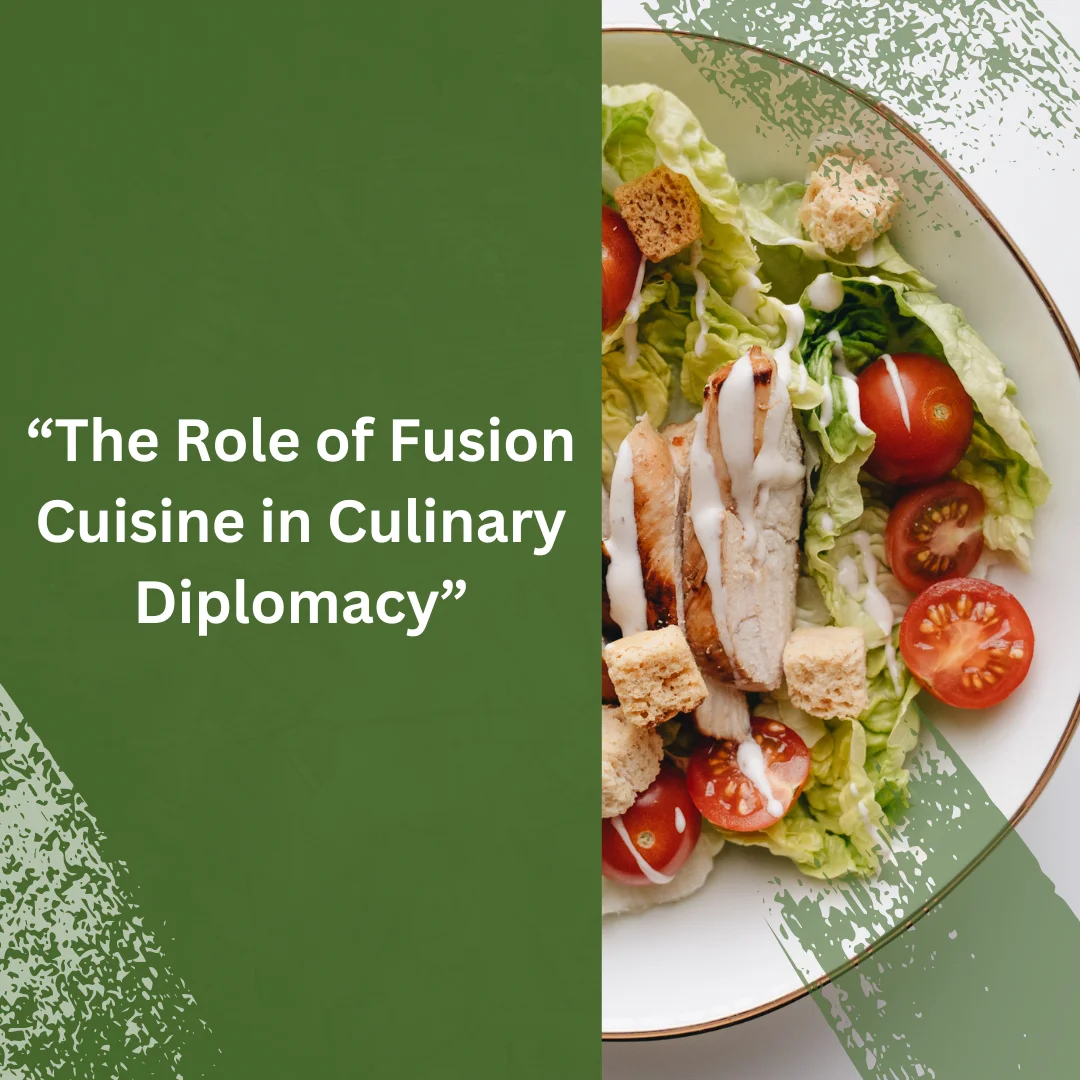In a world increasingly interconnected by technology, politics, and commerce, culinary diplomacy has emerged as a fascinating and effective tool for fostering international relations and cultural understanding. At the heart of this innovative diplomatic approach lies fusion cuisine—a culinary trend that blends elements from diverse culinary traditions to create new and exciting dishes. Fusion cuisine, with its global appeal and adaptability, plays a significant role in culinary diplomacy by bridging cultural divides and promoting dialogue through food.
What is Culinary Diplomacy?
Culinary diplomacy, also known as gastro-diplomacy, refers to the use of food and culinary experiences to promote cross-cultural understanding, strengthen diplomatic ties, and enhance a nation’s global image. It involves the strategic use of food as a means of communication, cultural exchange, and relationship-building. Fusion cuisine, with its inherent blending of flavors and traditions, is particularly well-suited to this role.
Fusion Cuisine as a Diplomatic Tool
- Breaking Down Cultural BarriersFusion cuisine creates a platform for cultural exchange by blending ingredients, techniques, and flavors from different culinary traditions. This cross-cultural mixing encourages open-mindedness and curiosity about diverse cultures. For example, a dish that combines Japanese sushi with Mexican tacos can introduce diners to new flavor profiles and cooking styles, fostering appreciation and dialogue about the origins and significance of each component.
- Showcasing Culinary InnovationNations and regions that embrace fusion cuisine often showcase their culinary innovation and creativity on the global stage. By presenting a unique fusion dish, a country can highlight its adaptability and openness to new ideas, reflecting a modern and progressive image. For instance, when a French chef creates a Korean-inspired croissant, it not only celebrates both culinary traditions but also symbolizes a willingness to experiment and collaborate.
- Enhancing International EventsFusion cuisine is frequently featured at international events, such as food festivals, diplomatic dinners, and cultural exchanges. These events provide opportunities for countries to highlight their culinary strengths and engage with diverse audiences. For example, a fusion dish served at a world expo can attract attention, spark conversations, and create lasting impressions about a country’s food culture and hospitality.
- Fostering Economic and Trade RelationshipsThe popularity of fusion cuisine can also influence economic and trade relations. As fusion dishes gain global recognition, there is an increased demand for ingredients and culinary products from various regions. This can lead to new trade opportunities and economic partnerships. For instance, the rise of global interest in Thai-Italian fusion dishes might boost demand for Thai spices and Italian cheeses, benefiting both countries’ economies.
- Promoting Cultural Diplomacy Through Food TourismFusion cuisine has the power to attract food tourists eager to experience innovative culinary offerings. Destinations known for their unique fusion dishes can become culinary hotspots, drawing visitors who are interested in exploring the intersections of different food cultures. This influx of tourists can enhance cultural exchange and promote a positive image of the destination.
Notable Examples of Fusion Cuisine in Culinary Diplomacy
- The “Kogi” Truck in Los AngelesThe Kogi Korean BBQ food truck, founded by Chef Roy Choi, is a prime example of how fusion cuisine can captivate a diverse audience. By combining Korean barbecue with Mexican tacos, the Kogi Truck created a culinary sensation that transcended cultural boundaries and became a symbol of Los Angeles’ dynamic food scene. This fusion success story highlights how inventive culinary approaches can bring cultures together and foster dialogue.
- Asian-Inspired Mediterranean CuisineRestaurants and chefs around the world are increasingly experimenting with blending Asian and Mediterranean flavors. Dishes like miso-glazed lamb chops or soy sauce-infused hummus represent a fusion of traditional Mediterranean ingredients with Asian techniques and seasonings. These dishes not only offer new flavor experiences but also serve as conversation starters about the blending of culinary traditions.
- Culinary Diplomacy Initiatives by GovernmentsSeveral governments have embraced culinary diplomacy as a strategic tool. For instance, the Thai government’s “Global Thai” campaign aimed to promote Thai cuisine worldwide, including innovative fusion dishes that blend Thai flavors with other culinary traditions. Similarly, Japan’s culinary diplomacy initiatives have included fusion restaurants and events that showcase Japanese ingredients in new and creative ways.
The Future of Fusion Cuisine in Culinary Diplomacy
As globalization continues to shape the culinary landscape, fusion cuisine will likely play an increasingly prominent role in culinary diplomacy. Its ability to blend and reinterpret diverse food traditions makes it a powerful tool for fostering cross-cultural understanding and building international relationships. By embracing fusion cuisine, nations can engage in meaningful dialogue, promote cultural exchange, and celebrate the rich tapestry of global food traditions.
In conclusion, fusion cuisine is more than just a culinary trend; it is a dynamic tool in the realm of culinary diplomacy. By blending diverse flavors and traditions, fusion cuisine not only tantalizes the palate but also bridges cultural divides, fosters international relations, and promotes a greater understanding of the world’s culinary heritage. As we continue to explore and celebrate the possibilities of fusion cuisine, we pave the way for a more connected and culturally appreciative global community.
